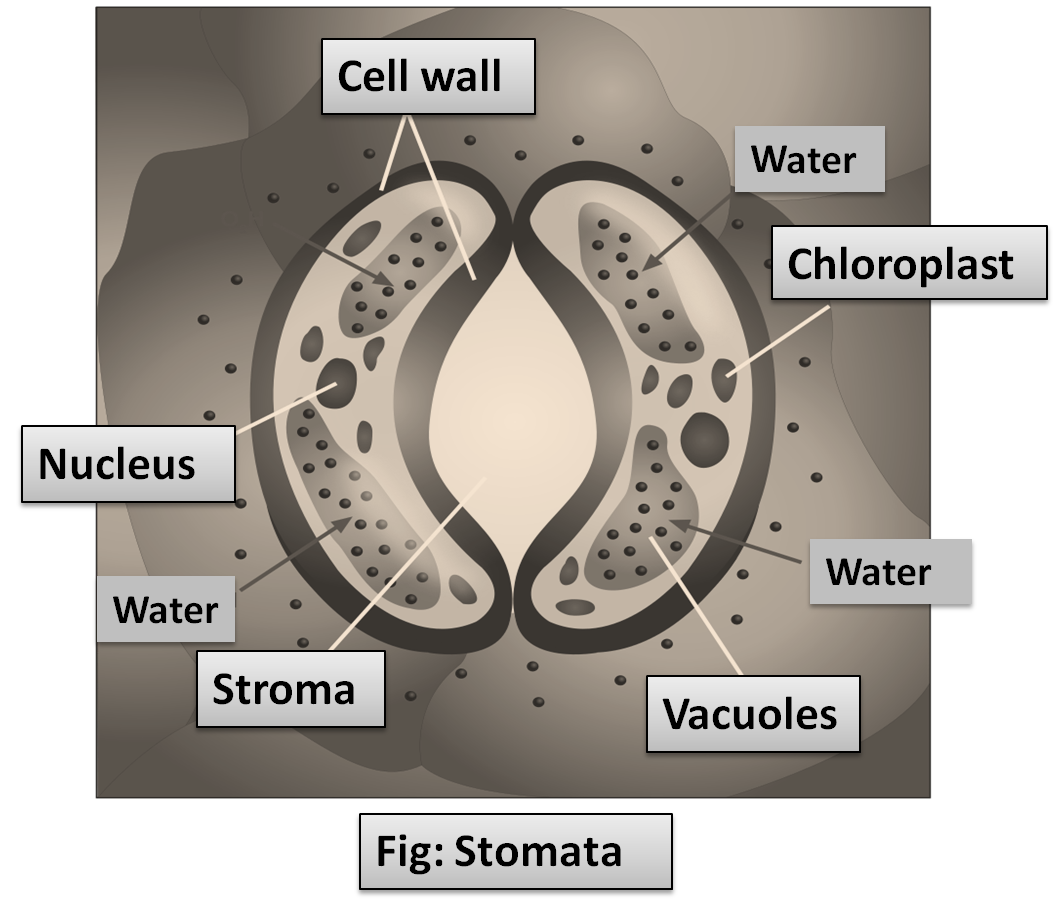
Scotoactive stomata occur in
(a) Succulent xerophytes
(b)Hydrophytes
(c) Mesophytes
(d) None of the above
Answer
416k+ views
Hint: Scotoactive stomata are the type of stomata which opens during night time and is closed during day time. It is an adaptation in the type of plants which live in an extreme type of habitat.
Complete step-by-step answer:

Succulent xerophytes possess scotoactive stomata. Stomata are tiny pore complexes found in the epidermis of leaves and other soft aerial parts. Two types of stomata can be observed in nature- Scotoactive stomata and Photoactive stomata. Photoactive stomata are the one which opens only during the day and closes during the night. This is the most common type of stomata found in mesophytic plants. By altering the time of opening and closing of stomata, these plants have adapted to survive in the extreme scarcity of water.
Additional Information:
Xerophytic plants are the category of plants which are well adapted to survive and thrive in a dry environment where water is scarce. Succulent plants are the xerophytic plants which are adapted to arid climates or soil conditions by storing water in their leaves and stems. This retention of water gives them a unique swollen or fleshy appearance. This property is known as succulence. This is the reason they are also known as fat plants. E.g. Cacti, Euphorbia.
Hydrophytes are the plants which are adapted to live in aquatic habitats such as ponds, rivers or oceans. E.g. water lily, Pistia. They have little or no root system. Leaves are large and floating due to the presence of air vacuoles in their epidermis to maintain buoyancy. Stomata, if present, lies on the exposed aerial parts of the plants.
Mesophytes are the terrestrial plants growing in a normal habitat with enough water for survival and moderate temperature. Their habitats are not extreme i.e dry as in xerophytes or wet as in hydrophytes. E.g. wheat, Mangifera indica.
In mesophytic plants, stomata can be observed on both the upper and lower surfaces of leaves. In monocots, they are equally distributed on both sides as in grasses. But in dicot leaves, the number of stomata on the upper surface is usually smaller, even absent in some cases. E.g. Apple, Mulberry.
So, the correct answer is ‘Succulent xerophytes.’
Note: Closure of stomata during the day helps succulent plants to conserve water by avoiding the loss of water via transpiration. The high temperature increases the rate of transpiration which the succulents have adapted to avoid. But the closure of stomata also means no exchange of gases. This is compensated by the opening of stomata during night time when sunlight is absent and thus water loss is minimized to its lowest possibility.
Complete step-by-step answer:

Succulent xerophytes possess scotoactive stomata. Stomata are tiny pore complexes found in the epidermis of leaves and other soft aerial parts. Two types of stomata can be observed in nature- Scotoactive stomata and Photoactive stomata. Photoactive stomata are the one which opens only during the day and closes during the night. This is the most common type of stomata found in mesophytic plants. By altering the time of opening and closing of stomata, these plants have adapted to survive in the extreme scarcity of water.
Additional Information:
Xerophytic plants are the category of plants which are well adapted to survive and thrive in a dry environment where water is scarce. Succulent plants are the xerophytic plants which are adapted to arid climates or soil conditions by storing water in their leaves and stems. This retention of water gives them a unique swollen or fleshy appearance. This property is known as succulence. This is the reason they are also known as fat plants. E.g. Cacti, Euphorbia.
Hydrophytes are the plants which are adapted to live in aquatic habitats such as ponds, rivers or oceans. E.g. water lily, Pistia. They have little or no root system. Leaves are large and floating due to the presence of air vacuoles in their epidermis to maintain buoyancy. Stomata, if present, lies on the exposed aerial parts of the plants.
Mesophytes are the terrestrial plants growing in a normal habitat with enough water for survival and moderate temperature. Their habitats are not extreme i.e dry as in xerophytes or wet as in hydrophytes. E.g. wheat, Mangifera indica.
In mesophytic plants, stomata can be observed on both the upper and lower surfaces of leaves. In monocots, they are equally distributed on both sides as in grasses. But in dicot leaves, the number of stomata on the upper surface is usually smaller, even absent in some cases. E.g. Apple, Mulberry.
So, the correct answer is ‘Succulent xerophytes.’
Note: Closure of stomata during the day helps succulent plants to conserve water by avoiding the loss of water via transpiration. The high temperature increases the rate of transpiration which the succulents have adapted to avoid. But the closure of stomata also means no exchange of gases. This is compensated by the opening of stomata during night time when sunlight is absent and thus water loss is minimized to its lowest possibility.
Recently Updated Pages
Class 11 Question and Answer - Your Ultimate Solutions Guide

Master Class 11 Business Studies: Engaging Questions & Answers for Success

Master Class 11 Accountancy: Engaging Questions & Answers for Success

Master Class 11 Social Science: Engaging Questions & Answers for Success

Master Class 11 Physics: Engaging Questions & Answers for Success

Master Class 11 Maths: Engaging Questions & Answers for Success

Trending doubts
The reservoir of dam is called Govind Sagar A Jayakwadi class 11 social science CBSE

What problem did Carter face when he reached the mummy class 11 english CBSE

Proton was discovered by A Thomson B Rutherford C Chadwick class 11 chemistry CBSE

In China rose the flowers are A Zygomorphic epigynous class 11 biology CBSE

What is Environment class 11 chemistry CBSE

Nucleolus is present in which part of the cell class 11 biology CBSE




